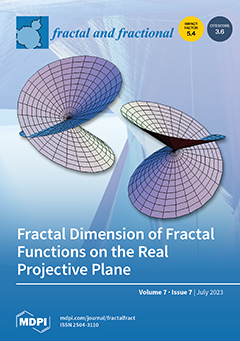The integrity index
Kv is the quantitative index in the CHN-BQ method, which can be determined by the acoustic wave test, volume joint number
Jv, or empirical judgment. However, these methods are not convenient and require the practitioner to have
[...] Read more.
The integrity index
Kv is the quantitative index in the CHN-BQ method, which can be determined by the acoustic wave test, volume joint number
Jv, or empirical judgment. However, these methods are not convenient and require the practitioner to have extensive experience. In this study, a new quantitative evaluation of
Kv is proposed to determine
Kv accurately and conveniently. A method for determining the fractal dimension
D based on the structural plane network simulation is proposed. A quantitative relationship between fractal dimension
D and integrity index
Kv is established based on the geological information from 80 sampling windows in Mingtang Tunnel. To further consider the effect of structural plane conditions on
Kv, a BP neural network is constructed with the fractal dimension
D and structural plane condition index
R3 as input and
Kv as output. The BP neural network is trained by 260 groups of tunnel data and validated by 39 groups of test data. The results show that the correlation coefficient
R2 between the predicted
Kvp and measured
Kvm is 0.93, and the average relative error is 7.51%. In addition, the predicted
Kvp from the 39 groups of data is compared with the
Kvd determined directly by fractal dimension
D. It can be found that the
Kvd has a larger error compared with the
Kvp, especially in the case of a
Kv less than 0.5. Finally, the BP neural network for predicting
Kv is applied to the Jiulaopo Tunnel. The maximum relative error between the measured
Kvm and the predicted
Kvp is 5.13%, and the average relative error is 2.71%. The BP neural network is well trained and can accurately predict
Kv based on the fractal dimension
D and the structural plane condition index
R3.
Full article





